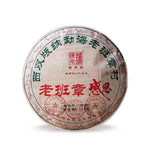How Many Cups of Pu Erh Tea a Day
Pu-erh tea boasts a rich history, a variety of types, and a unique processing method that sets it apart from other teas.
History and Origins of Pu-Erh
Pu-erh tea originates from Yunnan Province in China, with records dating back to the Tang Dynasty. Traditionally, the tea was traded along ancient tea routes, earning it cultural significance. The city of Pu'er, after which the tea is named, became a critical hub for its trade and production. Understanding its historical roots offers insight into its continued popularity.
Types of Pu-Erh Tea
Two main types exist: Sheng (raw) and Shou (ripe). Sheng Pu-erh undergoes a natural fermentation over years or decades, offering complex flavors that evolve over time. Shou Pu-erh, however, is artificially fermented, allowing for quicker production. Each type provides distinct taste profiles and aging qualities.
Bestsellers
Pu-Erh Tea Processing
The processing of Pu-erh involves several intricate steps. Leaves are harvested, withered, and then pan-fired. The leaves are rolled, sun-dried, and sometimes fermented. Sheng Pu-erh is aged naturally, while Shou Pu-erh undergoes an accelerated fermentation. These methods contribute to Pu-erh’s unique characteristics and health benefits.
Health Benefits of Pu-Erh Tea
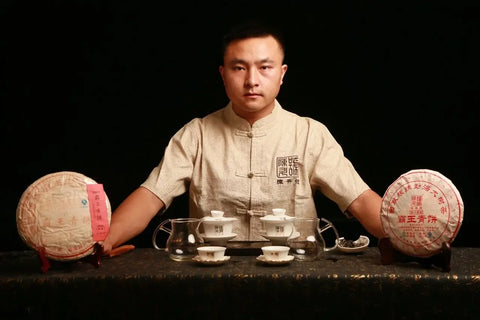
Pu-erh tea offers several health benefits that can make it a valuable addition to your daily routine.
- Weight Management: Drinking pu-erh tea may support weight loss by boosting metabolism and aiding in fat breakdown.
- Digestive Health: Pu-erh tea is known to aid digestion by promoting the growth of beneficial gut bacteria.
- Antioxidants: Rich in antioxidants, pu-erh tea helps combat oxidative stress and supports overall cellular health.
- Heart Health: Pu-erh tea may help lower cholesterol levels, which can contribute to cardiovascular health.
- Mental Clarity: The caffeine and theanine in pu-erh tea can enhance focus and mental alertness.
Consider adding a few cups of pu-erh tea to your daily regimen to enjoy these benefits.
Recommended Daily Consumption
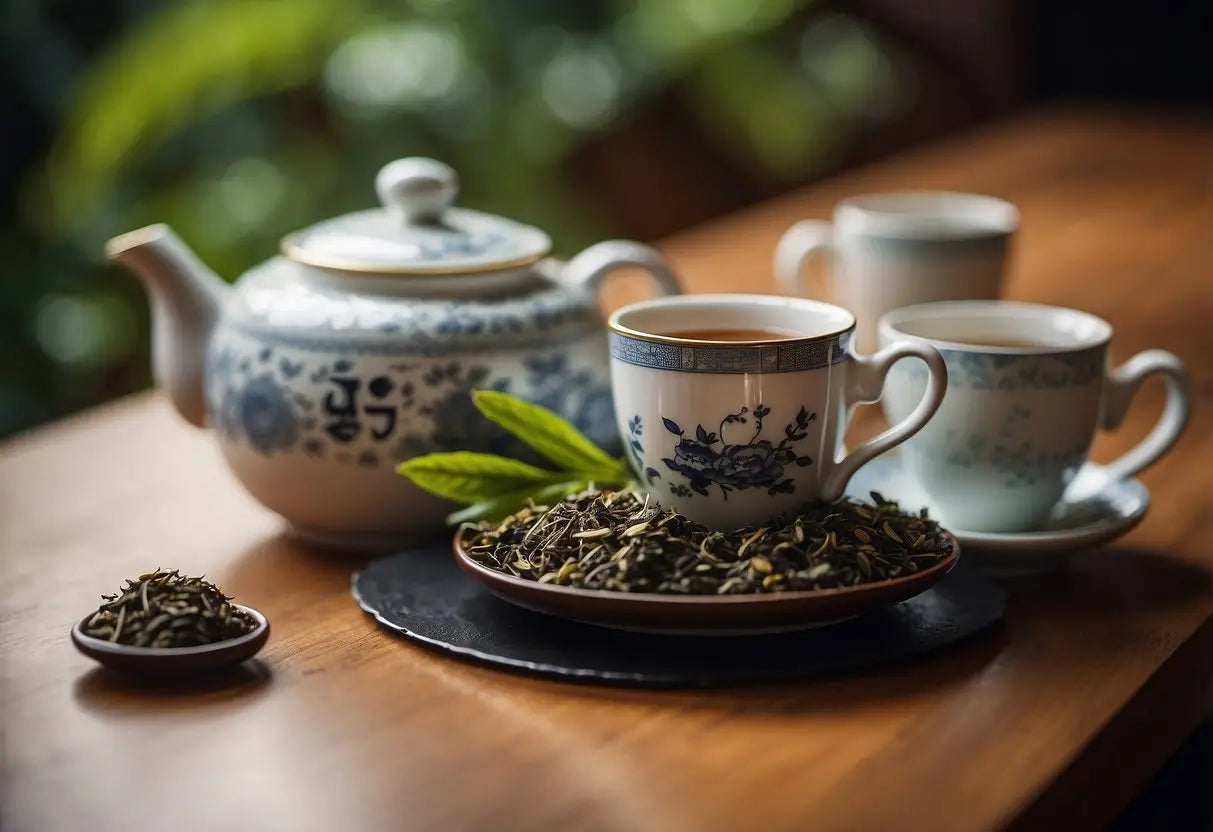
It is essential to know how many cups of pu-erh tea are safe to consume daily and the potential effects of drinking too much.
General Guidelines for Pu-Erh Intake
You can usually drink 2-3 cups of pu-erh tea daily without issues. These cups provide an adequate amount of antioxidants and caffeine to stimulate your metabolism and enhance overall well-being. It is important to avoid excessive consumption as overdoing it might lead to unwanted side effects.
Each cup of pu-erh tea contains approximately 30-70 mg of caffeine. Moderation is key, especially for those sensitive to caffeine. Consider your body's response and adjust your intake accordingly.
Effects of Overconsumption
Excessive intake of pu-erh tea can lead to several health concerns. High caffeine levels may cause insomnia, jitters, or a rapid heartbeat. Additionally, overconsumption may lead to digestive issues like acid reflux or stomach discomfort.
Some individuals might experience nutrient absorption issues, particularly with iron. High amounts of tea tannins can inhibit iron absorption. To avoid these issues, stick to the recommended daily intake and maintain a balanced diet.
Brewing Pu-Erh Tea
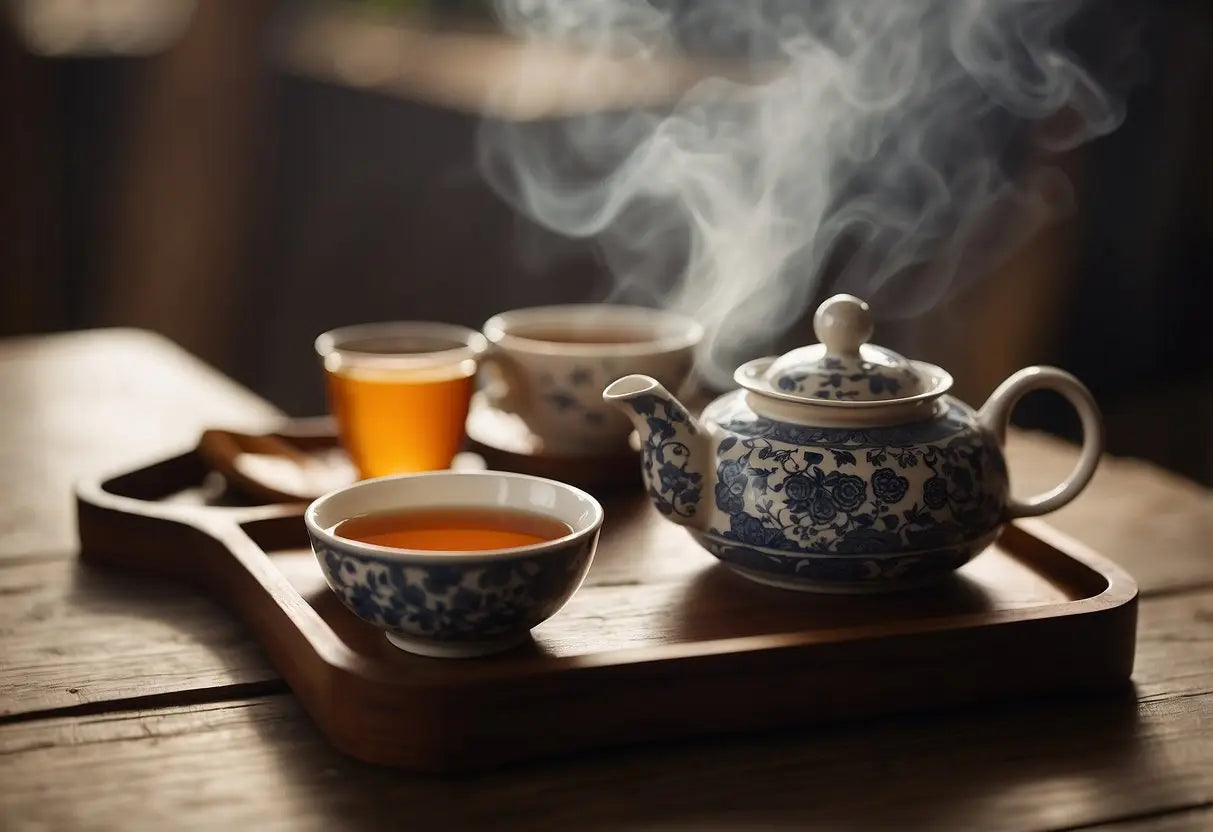
To brew Pu-Erh tea, start with quality loose leaves or compressed cakes. Rinse the tea leaves briefly with hot water to remove impurities and awaken the flavors.
Lao Ban Zhang
Ingredients:
- 1 teaspoon (3 grams) of Pu-Erh tea leaves
- 1 cup (8 ounces) of water
Steps:
- Boil the Water: Heat water to around 205°F (96°C).
- Rinse the Leaves: Pour hot water over the tea leaves and discard this first infusion.
- Steep the Tea: Add the rinsed leaves to your teapot. Pour the hot water over them.
- Steeping Time: Steep for 2-5 minutes. Experiment with steeping times to find your preferred strength.
- Serve: Pour the tea into cups and enjoy.
Consider using a dedicated teapot for Pu-Erh, as it can retain flavors over time.
Pro Tips:
- For a stronger brew, increase the amount of tea leaves.
- Use a gaiwan or small teapot for multiple short infusions.
- Store Pu-Erh properly in a cool, dry place to let it age gracefully.
Brewing times and temperatures can vary based on personal preference and the type of Pu-Erh. Adjust these variables to suit your taste.
Pu-Erh Tea and Weight Management
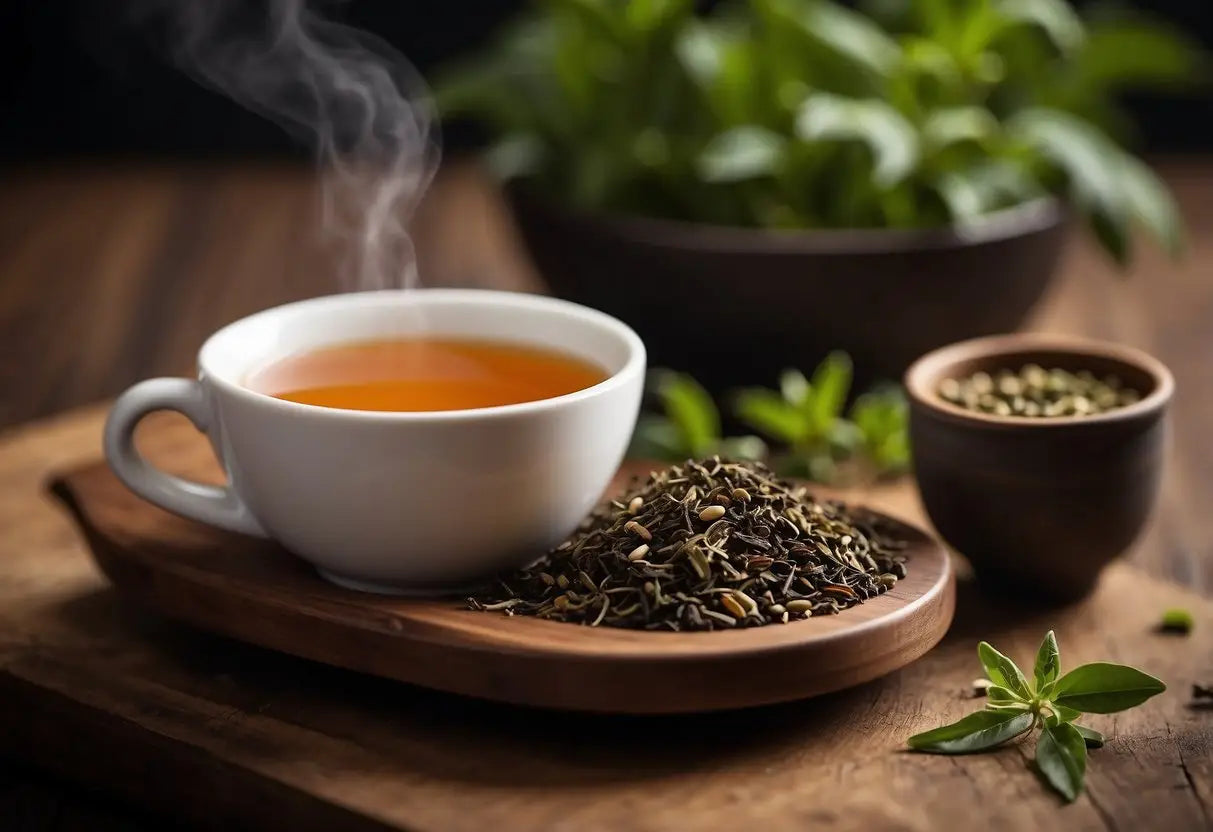
Research suggests that Pu-Erh tea may help with weight management.
One of the key components is its ability to boost metabolism.
The catechins found in Pu-Erh tea are known to aid in fat oxidation.
Metabolism and Digestion
Drinking Pu-Erh tea has been linked to improved digestion.
It may help your body to process fats more efficiently.
This can potentially reduce overall fat storage.
Appetite Control
Pu-Erh tea can act as a mild appetite suppressant.
This might help you eat fewer calories.
Drinking a cup before meals can be beneficial.
Lowering Blood Sugar
Studies have shown that Pu-Erh tea may help regulate blood sugar levels.
Stable blood sugar can prevent spikes in hunger.
This can make managing your diet easier.
Suggested Daily Intake
It’s generally recommended to drink 1-3 cups of Pu-Erh tea per day.
Consuming more than this could lead to side effects like insomnia or digestive issues.
Additional Tips
To get the most benefit, drink Pu-Erh tea without added sugar or milk.
Pairing it with a balanced diet and regular exercise can enhance weight management efforts.
Note: Always consult with a healthcare professional before making significant changes to your diet or caffeine intake.
Interactions and Contraindications
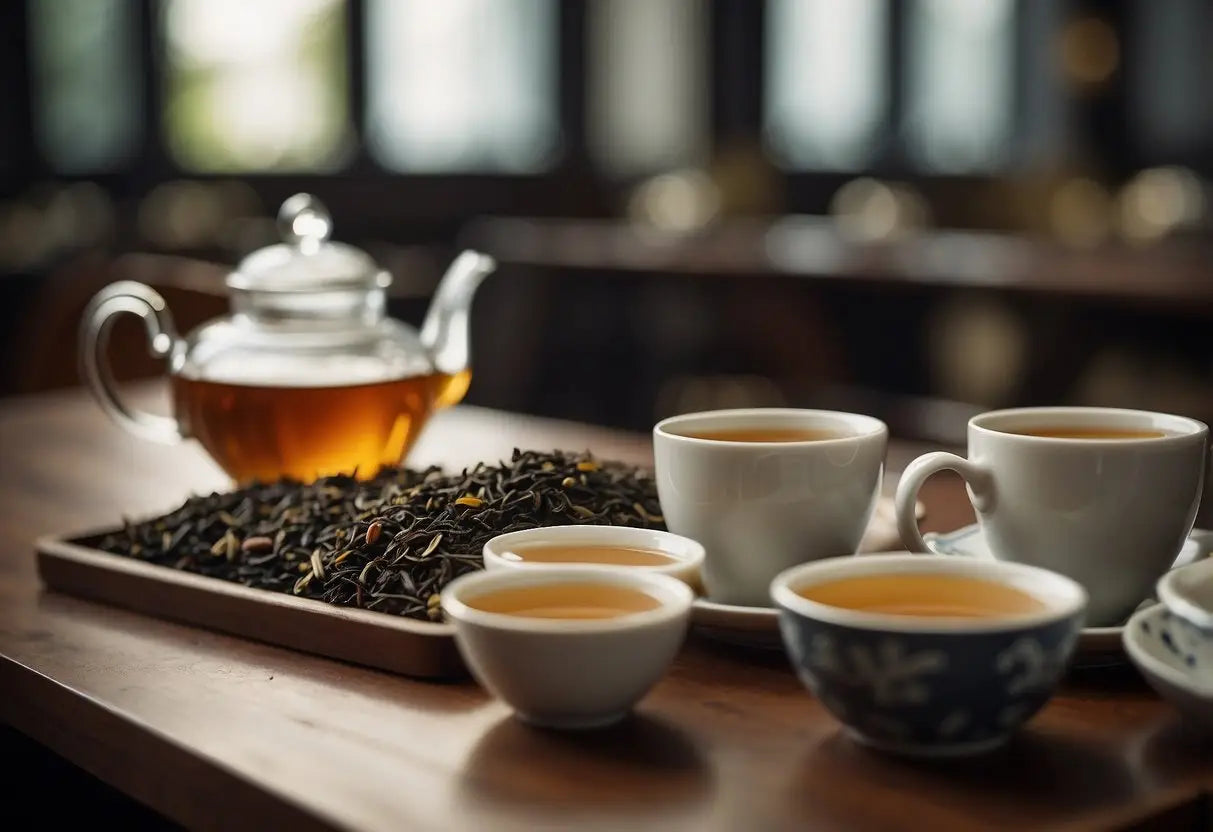
When consuming pu-erh tea, it's important to consider how it might interact with medications and certain health conditions. These interactions can impact both the effectiveness of medications and your overall well-being.
Interactions With Medications
Pu-erh tea contains caffeine, which can interact with several types of medications. Anticoagulants (blood thinners) such as warfarin can be affected, as caffeine may increase the risk of bleeding. Stimulant medications, especially those used for ADHD, can experience increased side effects like jitteriness or rapid heart rate when combined with caffeine.
Antibiotics like ciprofloxacin and norfloxacin can also be less effective. The presence of caffeine in pu-erh tea may lead to elevated heart rate and blood pressure, posing risks for those on beta-blockers or other cardiovascular medications. You should consult your healthcare provider to ensure safe consumption.
Health Conditions and Pu-Erh Tea
For those with heart conditions, the caffeine in pu-erh tea could exacerbate issues such as arrhythmia or hypertension. People with anxiety disorders might find that caffeine worsens their symptoms, leading to increased nervousness or panic attacks.
Individuals with gastroesophageal reflux disease (GERD) may experience worsened symptoms because caffeine can relax the lower esophageal sphincter, allowing stomach acid to rise. Pregnant women should limit pu-erh tea intake due to the caffeine content, which can affect fetal development and increase the risk of miscarriage.
Always discuss with your healthcare provider before making significant changes to your tea consumption, especially if you have preexisting health conditions.
Buying and Storing Pu-Erh Tea
When purchasing Pu-Erh tea, you must prioritize quality, as the taste and health benefits depend on it. Proper storage is crucial to maintaining its unique flavor, aroma, and beneficial properties.
Choosing Quality Pu-Erh
Selecting high-quality Pu-Erh tea involves checking several factors. Pay attention to the leaf quality, manufacturing date, and source. Look for whole, intact leaves without excessive stems or dust. High-quality Pu-Erh usually comes from reputable regions in China like Yunnan.
Consider the type of Pu-Erh tea: raw (sheng) or ripe (shu). Raw Pu-Erh is known for its complex flavors and aging potential, while ripe Pu-Erh is smooth and earthy. Inspect the tea's aroma and color. Fresh raw Pu-Erh has a greenish hue, while aged raw Pu-Erh can vary from yellow to reddish-brown. High-grade ripe Pu-Erh typically has a dark brown color.
Storage Best Practices
Proper storage of Pu-Erh tea is vital for preserving its quality. Store your Pu-Erh tea in a cool, dry place away from direct sunlight. Avoid areas with strong odors, as the tea can absorb unwanted smells.
Use porous containers like clay jars or boxes made of natural materials to allow for slight air exchange. Avoid using plastic or metal containers, which can trap moisture and lead to mold growth. Ensure the tea is not compressed too tightly when storing to let the leaves breathe.
Maintain a consistent environment with moderate humidity levels. Use a hygrometer to monitor the humidity, keeping it around 60-70%. If the humidity is too low, the tea can dry out; if too high, it might develop mold.
← Older post Newer post →











